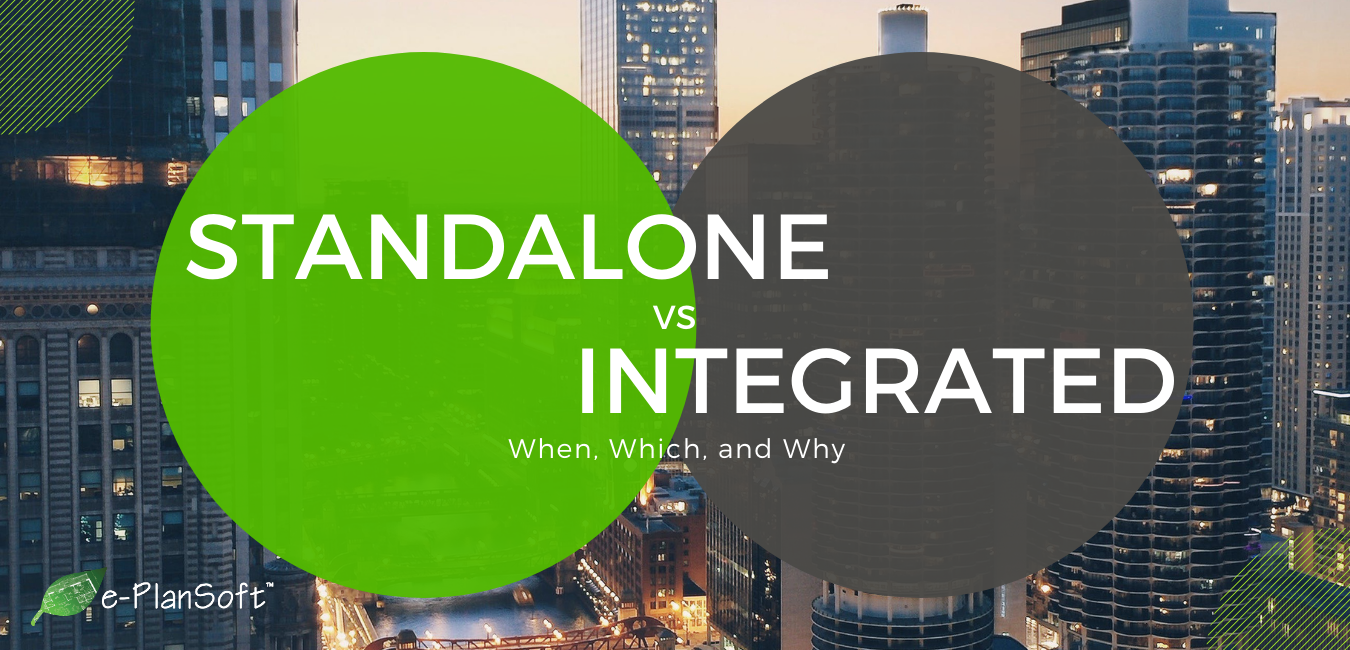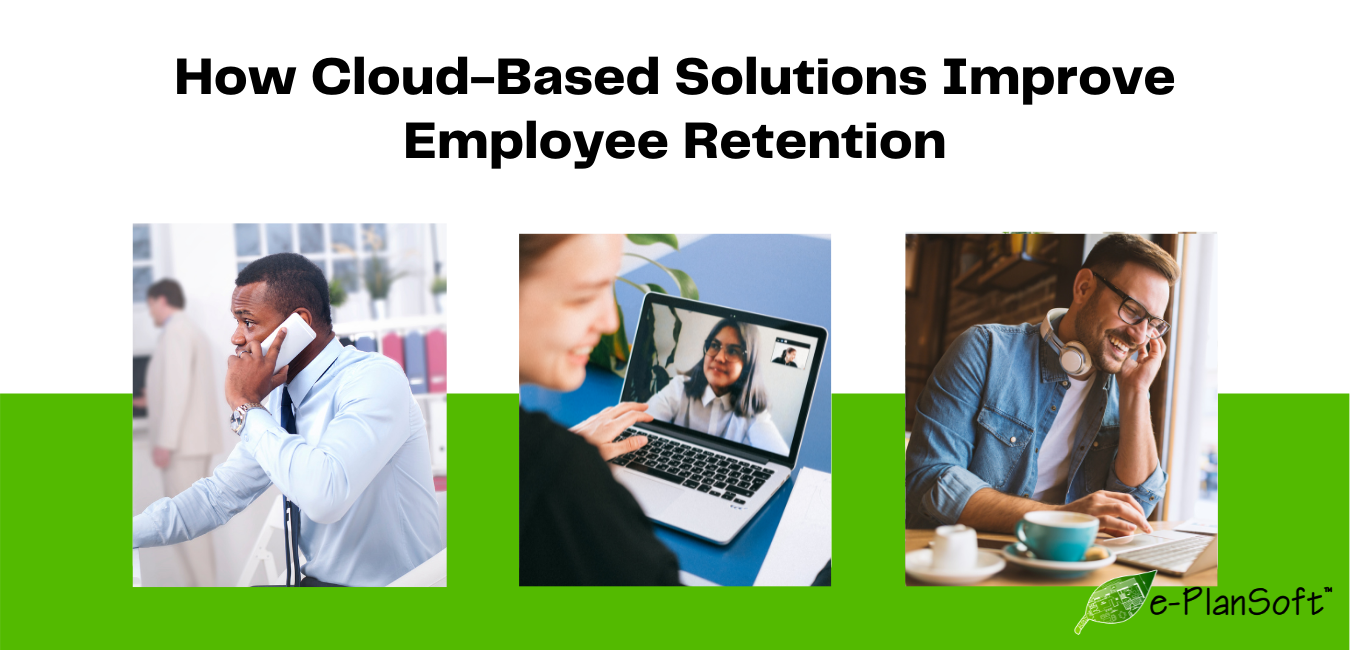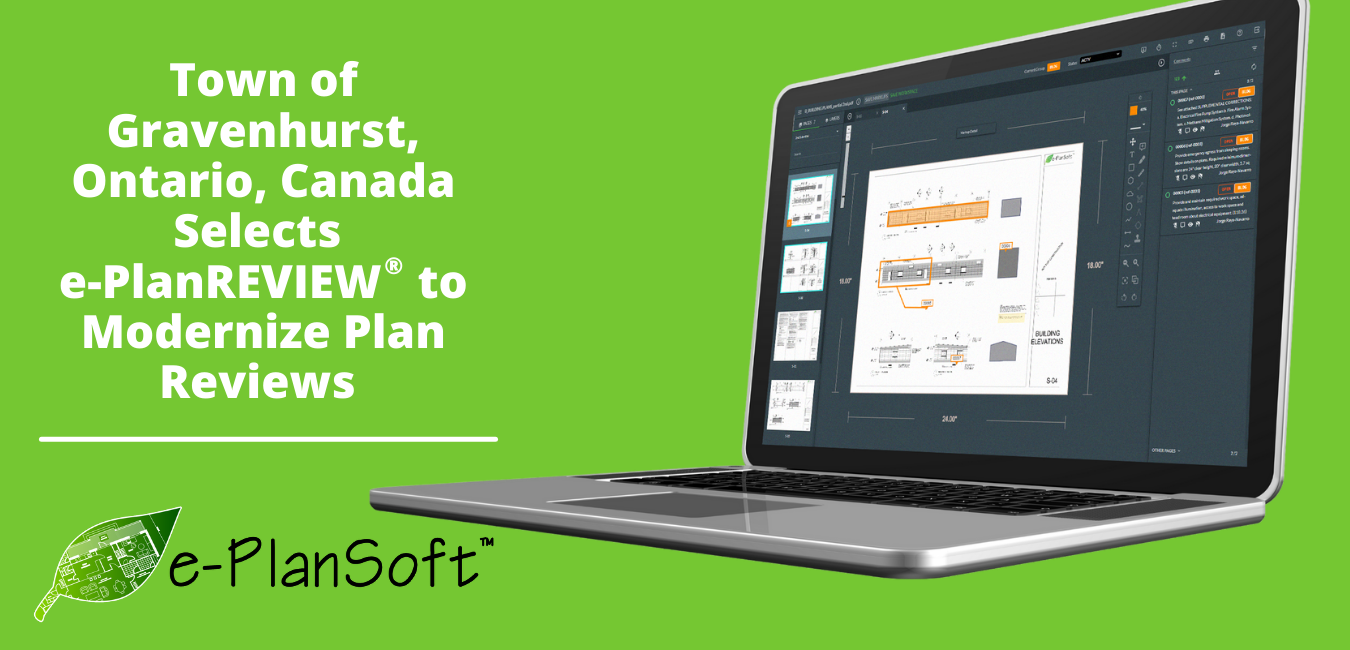Inside e-PlanSoft’s AI Roadmap
Across government agencies, one theme keeps coming up: staff need to do more with less. Reviewers are juggling high volumes of complex plan sets...

Explore our 2024 comparative review, your ultimate guide through the top-tier plan review solutions.
6 min read
 e-PlanSoft™ Team
Mar 2, 2023 8:00:00 AM
e-PlanSoft™ Team
Mar 2, 2023 8:00:00 AM

It’s rare to find a solution or service for which one-size-fits-all and offers a single best result. So, if your organization has been shopping for an electronic plan review solution, you may find that most solutions offer only some of what you need, but not all. It can be confusing and frustrating, and you may feel forced to sacrifice some features and benefits in order to gain others. It’s a matter of priorities, but not the best-case scenario.
But what if instead of making sacrifices, you could check every one of your requirements in a single solution? It’s not a matter of forcing the agency to be flexible. It’s a matter of demanding the solution to be flexible enough to conform to the agency’s needs.
Let’s break this down into the options typically under consideration to help you create your checklist.
Onsite vs. Remote
First, consider if your agency will be better served with an on-premise or cloud-based solution. There are many aspects of this decision, but one of the most important is how and where project participants can access the solution and work. Do you require participants to work exclusively onsite, or can they work from other locations, such as home or work-related travel sites? Is your organization willing to maintain the hardware, including servers, and software involved? And will software updates add extra burden to your IT Department? And what happens if the hardware fails? Will workers and projects be put on hold until the hardware can be restored or replaced? Further, in the case of a public emergency, such as the current pandemic, is your organization prepared to accommodate the safety measures required to keep people in the office? Does your lobby have enough space to maintain safe distancing between applicants?
Alternately, would your organization be better served with a cloud-based solution? In this scenario, project participants are equipped to access projects and conduct work from anywhere at any time, using any device with a secure internet connection. This allows the flexibility for workers to perform their job in the office, if desired, or from any other location. A cloud-based solution will also eliminate any issues of software updates, since updates are pushed automatically, and immediately available, and maintains virtual servers, including backup servers, so the burden of maintenance is removed from the agency.
Standalone vs. Integrated
Do you have a permitting platform in place? Are you planning to procure or replace one? If you answered “yes” to either of these questions, then you will gain the greatest efficiency with an electronic plan review solution that integrates with your current or future permitting platform. But it’s not quite as simple as that. This is an excellent example of the importance of the flexibility of the plan review solution. If your agency is planning to replace or acquire a new permitting solution, you may have been led to believe that there is only one way to manage it. Most electronic plan review solutions come with rigid requirements that only allow you to implement it as the last phase of a permitting adoption. And even more rigid is that many electronic plan review solutions only integrate with a select few permitting platforms. But both the schedule and the restricted options are unduly limiting and will deprive the agency of immediate improvements in efficiency.
So, where’s the flexibility in this area?
A truly flexible solution will allow you to implement as soon as you’ve selected it – as a standalone solution that allows you to get started with the added benefits and efficiencies right away. Then when the permitting platform has been selected, procured, and implemented, the plan review component can be integrated for even greater efficiency. Taking that flexibility a step further, the fully flexible solution will integrate seamlessly with the full array of permitting platforms on the market. When you think about it, by opting for a solution that doesn’t allow these options, your agency is accepting something less than what will best serve it. As you can see, the flexibility to operate as a standalone or an integrated solution accommodates requirements at every turn. For even more information on this check out our article, “Standalone or Integrated: When, Which, and Why”.
Customize vs. Configure…or Not
You’ll also need to take into account not just if the solution will align with your agency’s processes, but how. The difference is critical and can be measured in both time and expense. Some solutions tout the fact that their product can be customized, which will undoubtedly result in great alignment with the needs and priorities of the agency. However, what frequently isn’t apparent is the fact that customization requires special coding to inherently change the solution – and that translates to a lot of extra time and cost. Ideally, when you’ve found the solution to move forward with, you’ll likely want to be live and operational with it as soon as possible. The longer it takes to start using, the longer you’re operating at reduced efficiency. And the lost efficiency follows the solution because customization isn’t a one-and-done. As your agency’s needs change, your plan review solution will need to be changed accordingly, i.e., revisions to the customization will need to be managed, typically by the same vendor who originally provided the solution. And that means…you guessed it – more custom coding, more time, and more expense.
Alternately, the agency can opt for a solution that can be configured. Adding to the convenience and practicality of a configurable solution, updates can generally be performed by the product administrator, without any external intervention, i.e., no custom coding and no developers are needed. Because of this flexibility, the agency ends up with a solution that fits their processes that can be implemented and fully functional at a fraction of the cost and time investment.
Intake and Outgoing
Your intake and outtake process can set the tone for your projects. It can also increase or streamline the turnaround time. So, it’s critical to find the mode of intake that helps your agency and customers, instead of hindering them.
Do you want to manage intake through your permitting solution? If so, you’ll need to find a plan review solution that integrates seamlessly. This tracks back to the considerations in the Standalone or Integrated section of this article.
Are you planning on a standalone electronic plan review solution? In that case, find the solution with a robust intake that’s easy and intuitive, so your incoming and outgoing projects aren’t stuck in purgatory. In addition to being easy, be sure the intake component can vet incoming projects to ensure that every file received meets the criteria, so it’s ready for the next step. And to mitigate unnecessary time lags, find a solution that sends notifications to the correct reviewers to alert them that a file has been received.
Some agencies prefer their own in-house developed intake portal. If yours falls into this category, you’ll need to select an electronic plan review solution that will integrate with it. That’s not asking for the moon and stars, it’s demanding that the solution you select can accommodate the needs of your agency. It can be done! The flexible solution allows the agency to opt for the best mode for them.
Role-based Permissions
There are some commonalities from agency to agency, but each has its own processes, roles, and responsibilities for specific roles, including in the plan review process. So, it’s important to not be locked into a cookie-cutter set of permissions that may not be right for your agency. You’ll want to select a solution that allows the agency to set permissions and the level of permissions for defined user roles. To put that into perspective, remember that agencies procure solutions that will serve them for the long term, so it’s important to select a solution that will match your agency’s processes, and not require years of workarounds. Again, the agency should not have to give up some of its priorities to gain other functionality.
Perspective on Viewing
One of the very important aspects of plan review is how you view the plans, comments, reports, and even tools. Did you know that most electronic plan review solutions require a third-party or proprietary viewer? That means more to install, more to acquire, and more to possibly go wrong. But what is an agency to do?
The flexible option will allow any project participant to view the project in their browser, with no extra apps or downloads needed for viewing. Further, the agency will be best served with a solution that offers easy viewing of subsequent or previous versions in a manner most convenient to them to quickly see changes. It seems so logical that you may assume that these options are a given, but in fact, they are not.
You Can Have it All
Ultimately, the agency shouldn’t be forced to sacrifice some needs and preferences in order to accommodate others. As you can see a solution that offers the flexibility to align with the agency’s standards is the solution that offers the best fit and best benefits to the agency. Unfortunately, many solutions on the market today simply aren’t built to offer such flexibility. And those solutions would force the agency to prioritize their needs and sacrifice some of their requirements.
e-PlanREVIEW®
e-PlanREVIEW (EPR) from e-PlanSoft™ provides the most flexibility of any plan review solution on the market. Its flexibility allows agencies to operate as best suits their needs, without changing their operations or finding workarounds for any of their requirements. That’s because e-PlanREVIEW was built by experts in the industry, and with feedback from actual users.
Cloud-based EPR allows full freedom to work and access projects at any time, from anywhere, and from any device with a secure internet connection. Since it’s accessible from your browser, there are no third-party viewers needed. So, when staff needs to work remotely for any reason, it’s no problem. When they need to be in the office, it’s still no problem—and participants can collaborate concurrently in real-time, saving more time than ever before. And comparing versions is easy to do with EPR’s viewing options. View as overlays or side-by-side, as is most convenient to the reviewer.
Whether your agency needs a standalone solution, an integrated solution, or an interim standalone that will boost productivity quickly, and then integrate later with a permitting solution, EPR offers full functionality in any mode. In fact, EPR is unrivaled in its ability to offer all of these options.
And (EPR) is fully configurable without the need for expensive and time-consuming customization. The level of configurability in EPR means that agencies can select exactly how it should accommodate their needs, but not incur the initial or repeated expense of customization.
Fully flexible EPR also offers the most options in intake and outtake. You can select the intake model that best fits your needs, whether your agency has its own intake portal, opts for e-PlanSoft’s goPost™ Public Portal, or prefers the customer portal built into your permitting solution.
In fact, e-PlanREVIEW is the only solution on the market today that offers full flexibility to accommodate all of your agency’s requirements.
Want more information?

Across government agencies, one theme keeps coming up: staff need to do more with less. Reviewers are juggling high volumes of complex plan sets...

Remote work has become a normal part of life for building and planning departments. Whether during office closures, holidays, or hybrid schedules,...

As government agencies modernize their plan review processes, many are weighing familiar tools like Bluebeam against purpose-built platforms such as...

The move to an electronic plan review has been on the minds of permitting and other public sector agencies for a while now, especially as it seems...

2 min read
Great news! The COVID pandemic is slowing and numbers are down, in part because of the massive rollout of the COVID vaccine. As the rate of...

FOR IMMEDIATE RELEASE